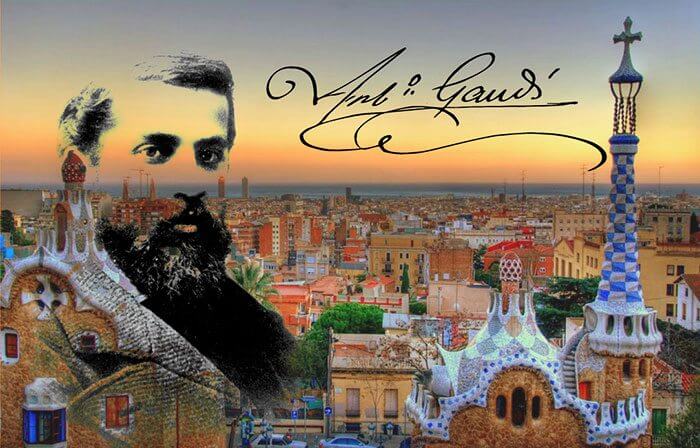
Antonio Gaudi is one of the greatest Spanish architects. The main period of his life he spent in Barcelona, so it is not surprising that the capital of Catalonia is full of masterpieces of the maestro. It is noteworthy that during his life the architect did not even think about the value of his gift, and some creations, such as the Güell Park, were not immediately appreciated.
Gaudi’s architecture in Barcelona
Barcelona’s architecture is inextricably linked to Antonio Gaudi’s work, just as the life of the great master is linked to the capital of Catalonia. As mentioned above, the main time the architect lived in Barcelona, creating mainly for wealthy clients. One of the few exceptions was the Sagrada Familia. Antonio Gaudi devoted the rest of his life to it, giving himself up to art with all his heart. Sagrada Familia is not finished to this day, and Gaudi found eternal peace in the walls of the temple.
Gaudi saw only the light in everything, turning a blind eye to the rest of life’s difficulties. He drew inspiration exclusively from natural motifs, sincerely believing that the real beauty lies only in it. And what a man has invented is not as natural and beautiful as the most unsightly thing in nature. Such a worldview helped the great maestro to design masterpieces: smooth curves of shapes, neat and gentle endings of compositions, pathos and charming facades – all his creations are full of motives of nature. In each of them it is possible at least remote reflections of plants or animals, and the house of Casa Batllo is confused with a mythical dragon.
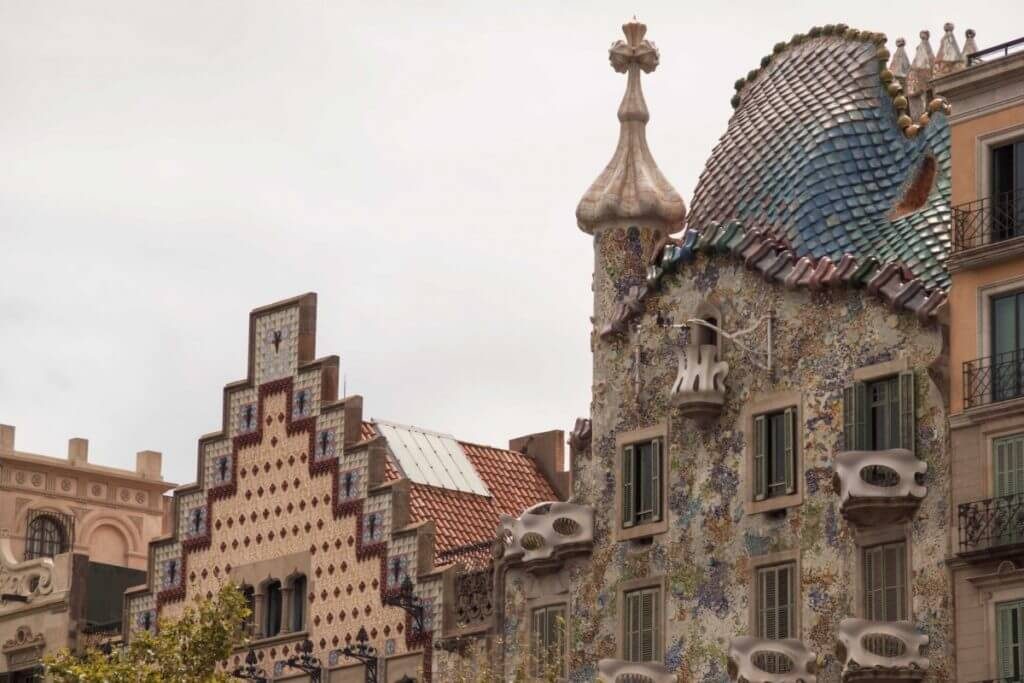
It would be wrong to think that only the capital of Catalonia has Gaudí’s architectural imprint. Barcelona has only some masterpieces, which will be discussed further.
Sagrada Familia

Sagrada Familia is Antonio Gaudi’s most majestic and monumental work. However, it is impossible to say that the whole temple is entirely his achievement. Other masters worked on it both before and after, but Gaudi found his gloss and unique charm of the Sagrada Familia only after reviewing the original drawings. The first samples were made by Francesco del Vieira, but a year later Gaudi took over the work. He immediately pointed out that the creation of a human being can not be higher and more majestic than that created by the mother-nature (we are talking about Mount Montjuic, the height of which is 171 meters), and decided that the highest spire of the future temple will not rise above the ground for more than 170 meters.
Not only on the facades was the great architect trying to do his best: the interior of the cathedral also amazes the imagination. The interior of the temple is similar to the forest, whose branches almost completely hide the starry sky. Gaudi thought of everything to the smallest detail, and made sculptures for the cathedral personally, from live animals.
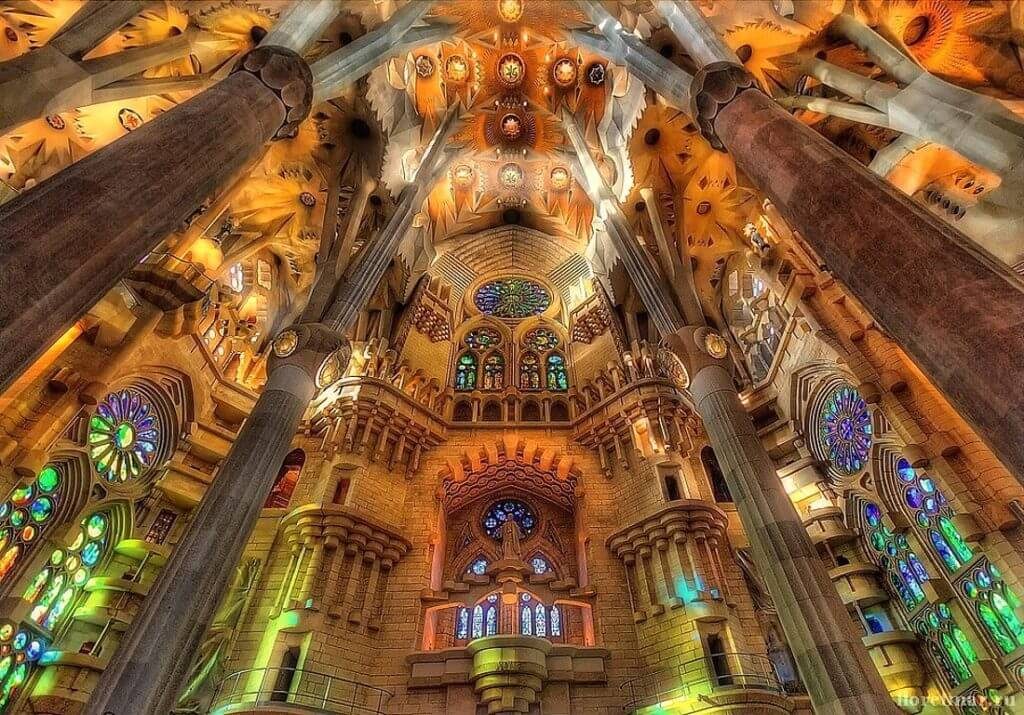
The story of his death is also closely linked to the cathedral. When Gaudi was hitted by the tram, he was taken to a hospital for the poor, as he was dressed in unsightly suit and did not have much cash with him. Of course, he was unable to receive any quality assistance there, and on June 10, 1926 Antonio Gaudi found his last home in one of his creations – Sagrada Familia.
Gaudi houses in Barcelona
Gaudi made a special contribution to the art of Barcelona by building houses. Casa Mila and Casa Batllo are the most famous, but not the only works of the architect. In the capital of Catalonia, here and there are residential buildings that have become the property of the Catalans.
Casa Vicens
Built between 1883 and 1885 as a summer house for the Vicens family, it is an example of the architect’s earliest work . This house has its own unique feature – it is made in honor of a single palm tree. Gaudi, inspired by the depths of nature, saw a lonely palm tree standing alone and decided to build a whole house in her honor.
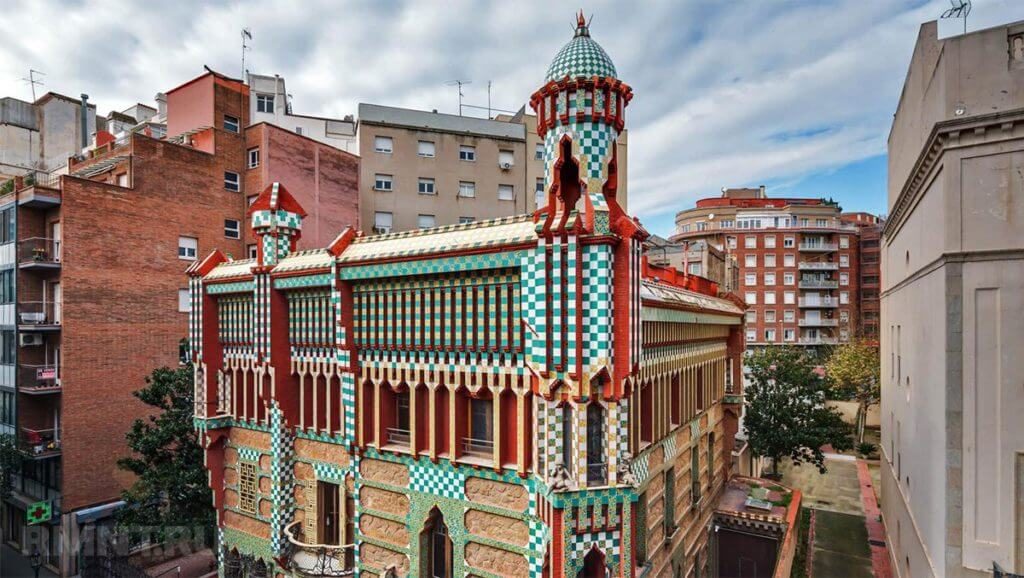
Unfortunately, Casa Vicens is a private property. It’s one of Gaudi’s few houses that are closed to the public. However, the owners have shown their magnanimity – every year on March 22nd they let visitors in to see this magnificence.
Casa Calvet
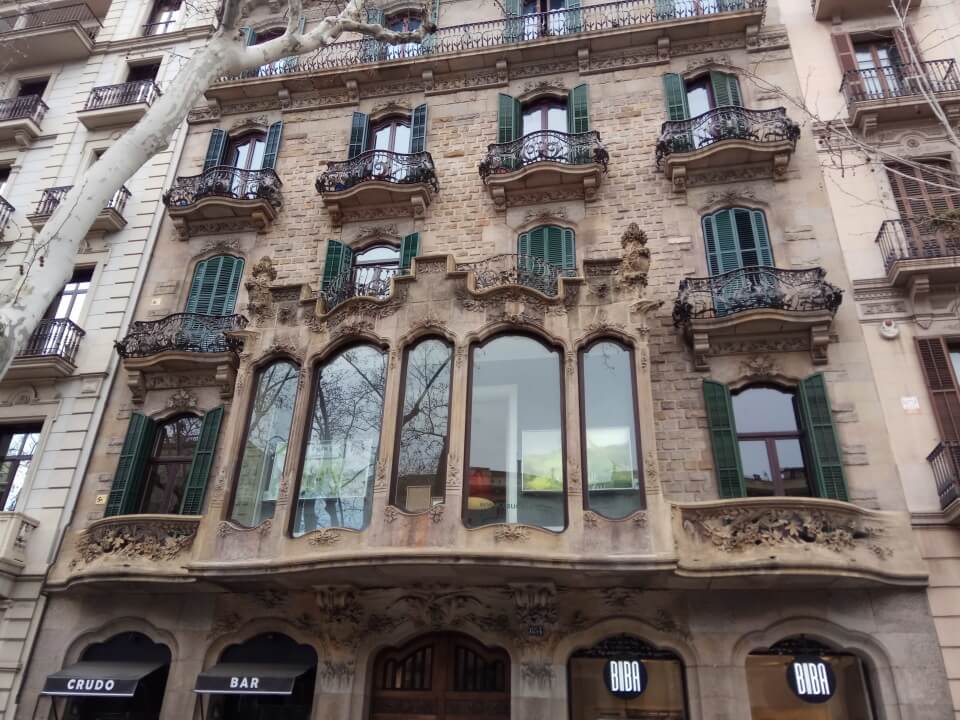
The Calvet house is far from being the most famous work of an architect. Gaudi built it for a widow who was guided by only one problem: money. The house was supposed to bring maximum benefit without any decorations.
Gaudi listened to her only in part, decorating the house where it was necessary. Thus, the door peepholes were the honeycombs, and the front doors were hammers that struck the metal bedbug exactly. This is justified by the ancient Catalan tradition: according to it, killing bedbugs brings good luck. However, the locals have another opinion on this matter – Gaudi was a very neat man, and even admiring the nature, sincerely hated these insects. He was not against their existence, but wanted them to live somewhere far away.
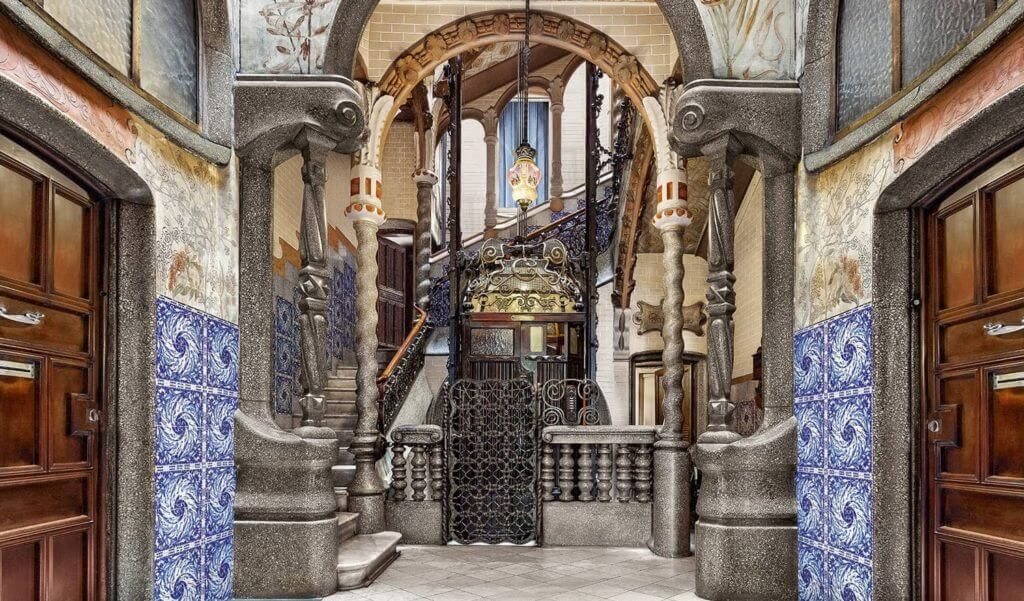
The Calvet house was awarded the title of the best building in Barcelona in 1900. It seemed strange to everybody: as well as to the sculptor’s acquaintances, who knew about more skillful works, and to strangers. But anyway, the authorities decided to award the title of Casa Calvet, justifying the fact that the genius is hidden in detail.
Сasa Calvet is still used for its intended purpose: offices are located on the ground floor, there is a warehouse in the basement, and apartments on the upper floors can be rented to anyone. However, nowadays it costs fabulous money.
Casa Batllo

Someone who hasn’t seen Casa Batllo’s house alive has definitely heard of it. This building is an example of Gaudí’s architecture. The House of the Dragon is the name given to it by the Catalans. Indeed, from the facade to the roof, the house resembles a fire-breathing monster.

The interior decoration is also striking with its uniqueness. Even the stairs are made in a special way, they are elegant and aesthetic, as if they move themselves. Casa Batllo is open for visits almost every day, and it is a crime to visit Barcelona without seeing it.
Casa Mila
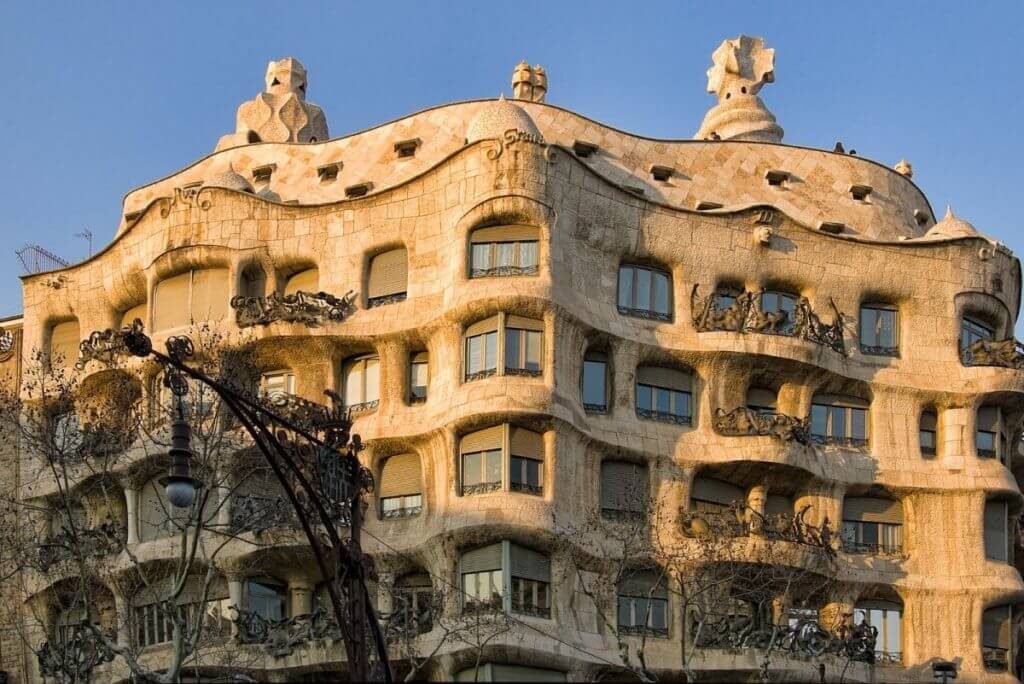
Another house you’re not going to get past. The Living Rock is a nickname he got from the Catalan population. Really, the house of Mila is made entirely of natural rock.
The idea for this building is the harmony of stone and water. Only Gaudi could manage to combine these elements. Many architects, before and after it tried to repeat the same thing, stumbled upon dissonance only. Casa Mila, like Casa Batllo, is open to tourists, and if desired, you can visit it at least every day.
Casa Figueres
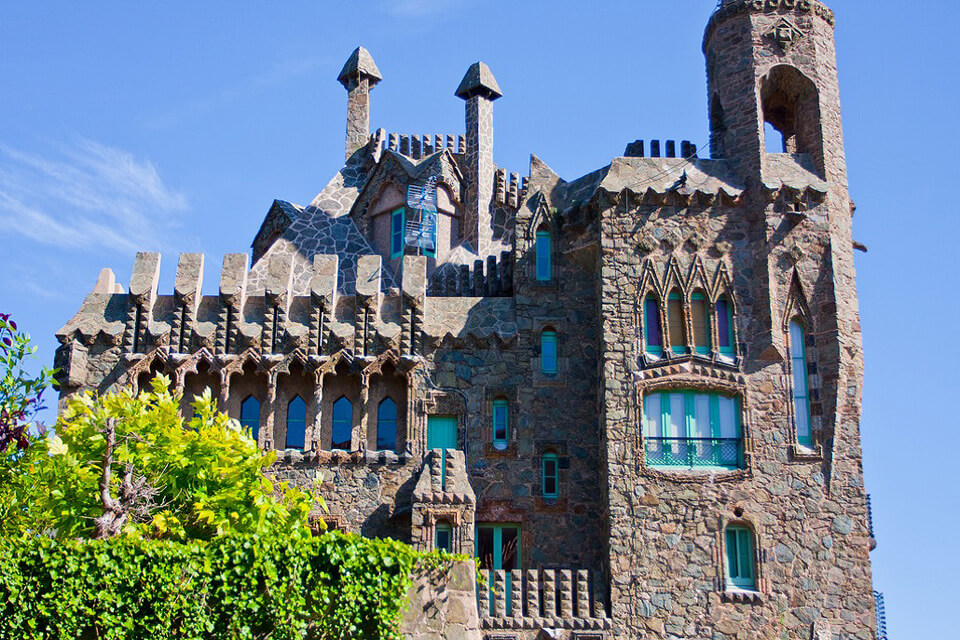
This house is located on Belesguard street, which tourists rarely visit. But Gaudi’s work is definitely worth getting to know. It is full of medieval spirit, not typical enough for an architect. Another feature is the unjustified heightening of the building, which Antonio did not usually use. The distance between the floor of the basement and its roof is 3 meters, and the ground floor can accommodate three adult men standing on each other. In general, the house rises 33 meters above the ground.
The Figueres House is the same private property as Casa Vicens, but due to the fact that the owners urgently needed a considerable amount of money to restore the masterpiece of the architect, in 2013 the viewing of the house became available to the public. Of course, it is not free of charge.
El Colegio Teresiano o Colegio de las Teresianas

Of course, the houses and temple aren’t Gaudi’s only masterpieces in Barcelona. It has been built for both the powerful and wealthy, as well as for the middle class. El Colegio Teresiano is a prime example of low-paying work. The building was built for teresians, whose order was headed by Henrik de Usso.
Due to the limited budget, Gaudi was forced to use cheap materials from which the previous architect (Juan Ponce) could not build a decent college. But Gaudi was a genius, so he was able to satisfy the customer’s wish, decorating the building with a minimum of ornaments, but preserving its extraordinary beauty.
Antonio Gaudi and Eusebi Güell
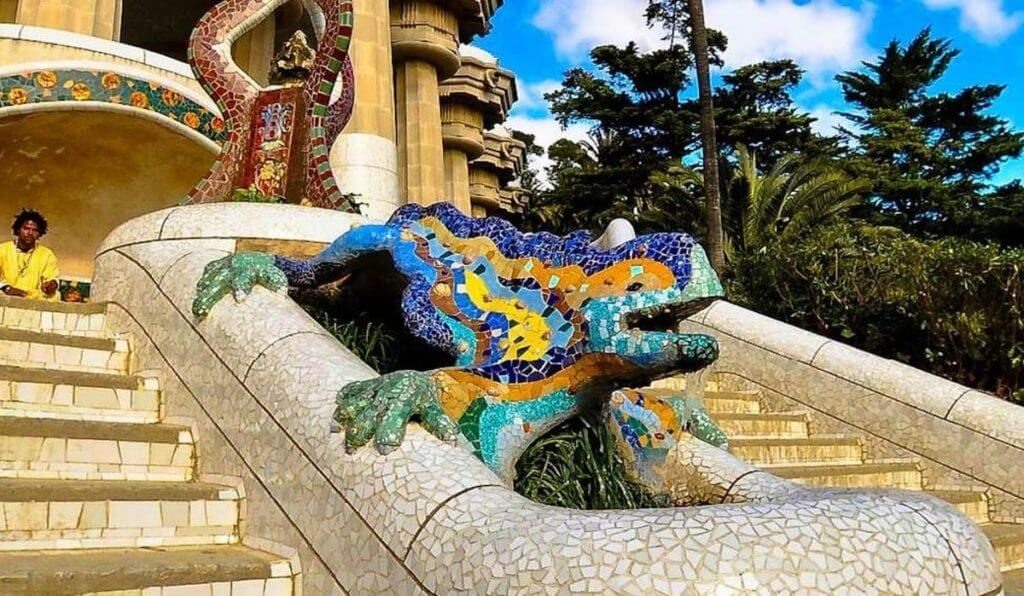
Architect and Earl… What do these people have in common at first glance? However, it was a chance encounter, namely a job, that brought together these extraordinary personalities. It was a fateful meeting between Gaudi and Güell that shaped the final image of Barcelona, which we can see today.
Pavellons Güell, or Güell Pavilions
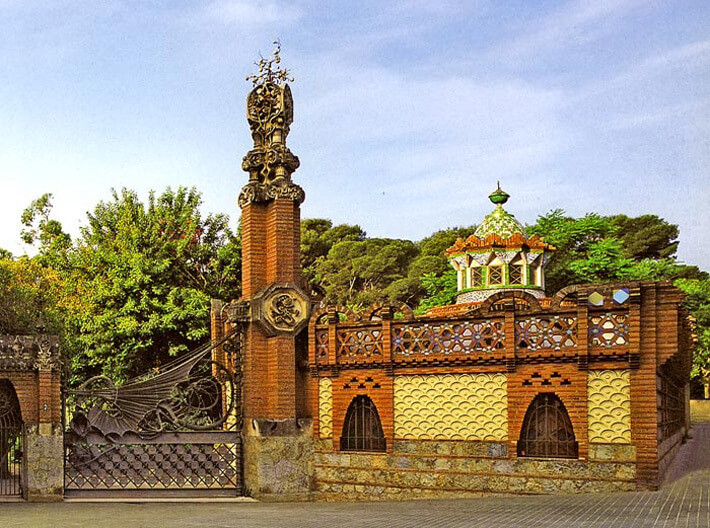
The first acquaintance of Gaudi and Güell was when the earl ordered the reconstruction of his country residence. He wanted something unusual and worthy of a high status as a patron of the arts, so he did not limit the maestro’s financing or fantasy. Gaudi took advantage of this to create an entire composition in the single style.
He made it out of expensive material that imitated a dragon scale. Pavilions, stables, walls and fences, all filled with a single palette. Gaudi paid special attention to the gates, which were supposed to make an indelible impression on visitors.
The monumental gates were horrifying for the guests, as the tricky mechanism installed in the construction moved the paws and the head of the dragon guarding the manor. However, the mechanism has not survived to this day, as well as the main part of the composition. Only the arch of the gate has remained accessible to the eyes of the tourist, with a frozen stone guard, to whom nothing can return the former greatness.
Palau Güell

Earl Eusebi was fascinated by the work of Antonio Gaudi, and a few years after the reconstruction of the residence made a special order to the architect – the palace. Some people confuse it with an ordinary house, but this is not the case. Gaudi spent about three years designing and building the palace, which was even a solid period for him. The result struck the owner, but, unfortunately, daily amaze tourists palace was not destined. He, like some other buildings, is a private property and can only be admired from the outside.
Palau Güell is located in the heart of the Carrer Nou de la Rambla, and the common person can only see the roof of the building. However, even when you see it, it’s hard to stay disappointed. Each chimney, located on it, is made in a special way, which differs from others. From a distance the roof resembles a wonderful garden, with magic mushrooms and trees.
Park Güell
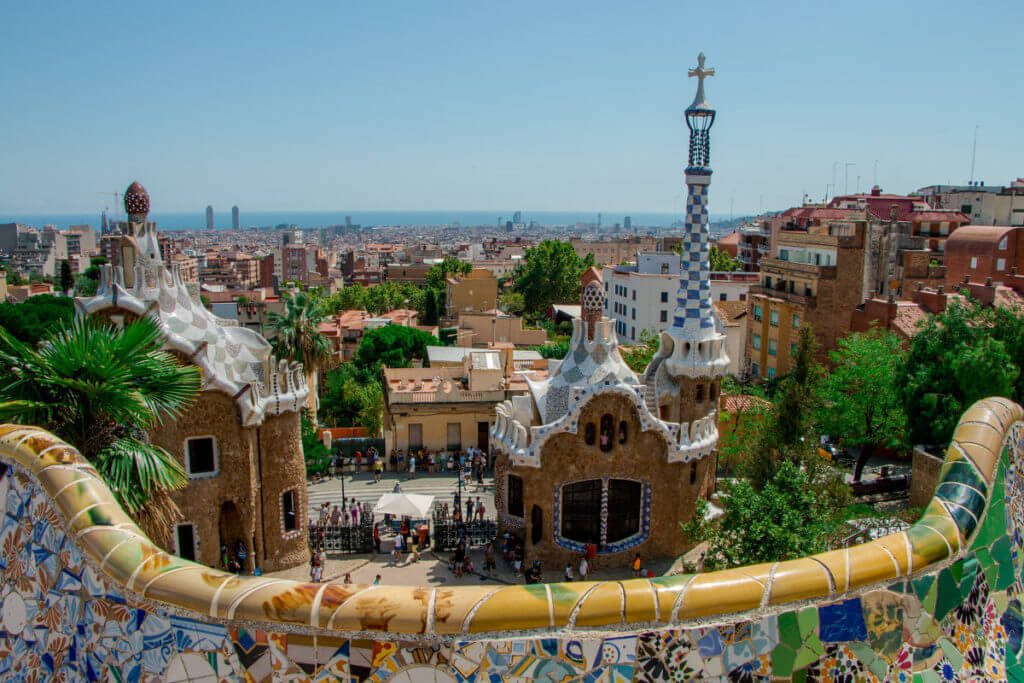
Gaudí’s creation, like Casa Mila house, was not immediately appreciated. A park where only the richest people in Barcelona were supposed to live. Unfortnetuly, this idea was not accepted by the authorities. Three houses had to be occupied by the creators of the masterpiece (Gaudi and Eusebi), as well as their lawyer friend. Today, Park Güell is one of Barcelona’s most important cultural treasures, more information about which can be found here.
In short, even a few days is not enough to feel what Gaudi has invested in Barcelona. To get to know his work properly, you need to spend all your free time exploring Gaudi’s sights. Of course, it would be uncomfortable living somewhere in the suburbs. If you want to study Antonio Gaudi’s work comfortably, we recommend staying at the Cuatro Naciones hotel. It is within walking distance of the most significant creations of the master, and the prices for rooms will pleasantly surprise inquisitive tourists. However, you can read more about the hotel on the booking.com




